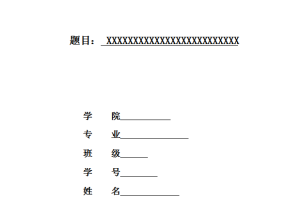摘要
近些年来,很多企业都逐渐意识到内部控制的重要性,内部控制是指一个单位的各级管理层,为了保护其经济资源的安全、完整,确保经济和会计信息的正确可靠,使得经营活动能够更加高效的进行,从而协调经济行为,控制经济活动,充分使用各种资源,利用单位内部分工而产生的相互制约,相互联系的关系,形成一系列具有控制职能的方法、措施和程序,并予以规范化,系统化,使之成为一个严密的、较为完整的体系。应用有效的内部控制方法能够使企业的经营目标顺利实现,企业资产不受损害,企业的会计部门能够得到更加精准的材料和数据,企业的经营管理目标能够更快达到,更大程度地提升企业价值。而在内部控制诸多要素中,企业存货系统的内部控制是重中之重,处理好存货的内部控制,可以很大程度的降低存货的风险以及损失,更好地降低企业管理成本。
本文先就存货流通环节讨论了独凤轩公司的现状,包括存货的采购、仓储、生产加工及销售,再找出其中出现的问题,比如存货管理人员权责不明、收发货地区商品管理混乱、存货成本核算不清、存货销售系统对接管理不明等问题,最后找出出现这些问题的原因,并制定出以加强人员管理职责、健全库存功能区域合理化、明确存货成本核算方法、建立以零库存为目标的存货内部网络化管理机制,让企业管理者能够高效准确把握企业相关,使企业的经营管理目标更快实现。
关键词:存货 内部控制 企业管理目标
ABSTRACT
In recent years, many are gradually aware of the importance of internal control, internal control refers to all levels of management in a unit, in order to protect the security of its economic resources, ensure economic and accounting information correct and reliable, can make business activities more efficient, so as to coordinate economic behavior, control of economic activities, make full use of all kinds of resources, and mutual constraints generated by the internal division of labor, the relationship between each other, forming a series of control functions, measures and procedures, and standardized, systematic, make it become a rigorous and complete system. The application of internal control method can make the business objectives smoothly, the enterprise assets is not compromised, the enterprise accounting department can get more accurate data and materials, the enterprise management goal to achieve faster, more effectively enhance corporate value. And in many elements of internal control, the internal control of enterprise inventory system is the top priority. Dealing with inventory internal control can greatly reduce inventory risk and loss, and better reduce business management costs. This article first discusses the status quo of the inventory circulation dufengxuan company, including stock purchase, storage, production and processing and sales, and then find out the problems, such as inventory management personnel, management responsibilities unknown delivery area commodity confusion, stock cost accounting is not clear, the system of inventory sales management of docking is unknown and so on, and finally find out there the reasons for these problems, and set out to strengthen personnel management responsibilities, improve the function of regional inventory rationalization, clear inventory cost accounting method, to establish the zero inventory target inventory internal network management mechanism, make enterprise managers can efficiently and accurately grasp the enterprise, make the enterprise management goal to achieve faster.
Key words: inventory, internal control, inventory control of enterprise management objectives
目录
摘要…………………………………………………………………………………………………………………. i
ABSTRACT……………………………………………………………………………………………………….. ii
一、 绪论………………………………………………………………………………………………………… 1
(一) 研究背景及研究意义……………………………………………………………………………… 1
(二) 文献综述……………………………………………………………………………………………… 1
(三) 研究思路与方法……………………………………………………………………………………. 3
(四) 贡献与不足………………………………………………………………………………………….. 3
二、 存货内部控制相关理论……………………………………………………………………………….. 4
(一) 存货内部控制概念…………………………………………………………………………………. 4
(二) 食品企业存货内部控制内容…………………………………………………………………….. 4
- 存货管理岗位的分工与授权批准…………………………………………………………… 4
- 存货的请购与采购控制……………………………………………………………………….. 4
- 存货的验收与保管控制……………………………………………………………………….. 5
- 领用及盘点控制………………………………………………………………………………… 5
三、 独凤轩食品股份有限公司存货内部控制现状……………………………………………………. 5
(一) 独凤轩食品股份有限公司概况…………………………………………………………………. 5
(二) 公司存货采购及验收环节内部控制…………………………………………………………… 6
(三) 公司存货仓储及领用环节内部控制…………………………………………………………… 7
(四) 公司存货生产或加工环节内部控制…………………………………………………………… 7
(五) 公司存货销售环节内部控制…………………………………………………………………….. 7
四、 独凤轩食品股份有限公司存货内部控制存在的问题及原因…………………………………. 9
(一) 存货管理人员责权不明。……………………………………………………………………….. 9
(二) 收货区发货区商品管理混乱…………………………………………………………………….. 9
(三) 存货内部控制的落实程度不强…………………………………………………………………. 9
五、 独凤轩食品股份有限公司存货内部控制改进建议……………………………………………. 10
(一) 加强人员管理职责建设…………………………………………………………………………. 10
(二) 健全仓库功能区域合理化布局………………………………………………………………… 10
(三) 引入内控评价……………………………………………………………………………………… 10
六、 总结……………………………………………………………………………………………………….. 11
参考文献………………………………………………………………………………………………………… 12
ENGLISH INFORMATION………………………………………………………………………………………. 13
译文………………………………………………………………………………………………………………. 14
致谢………………………………………………………………………………………………………………. 15





